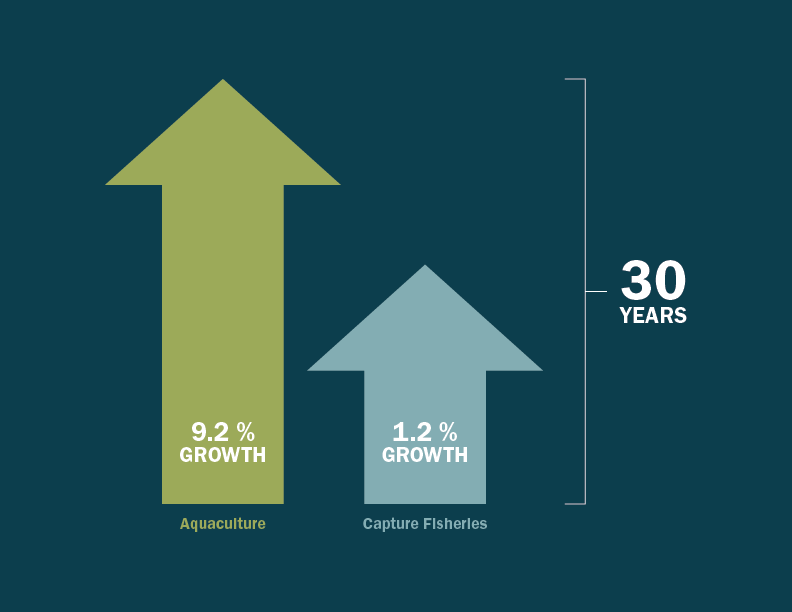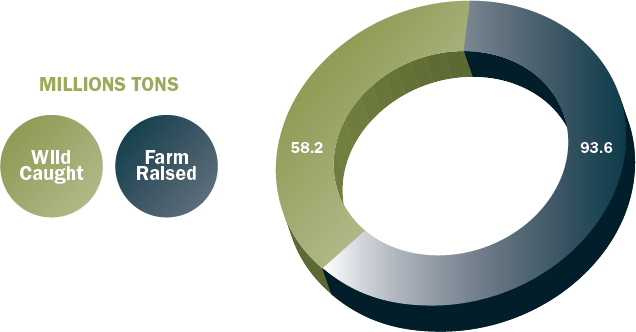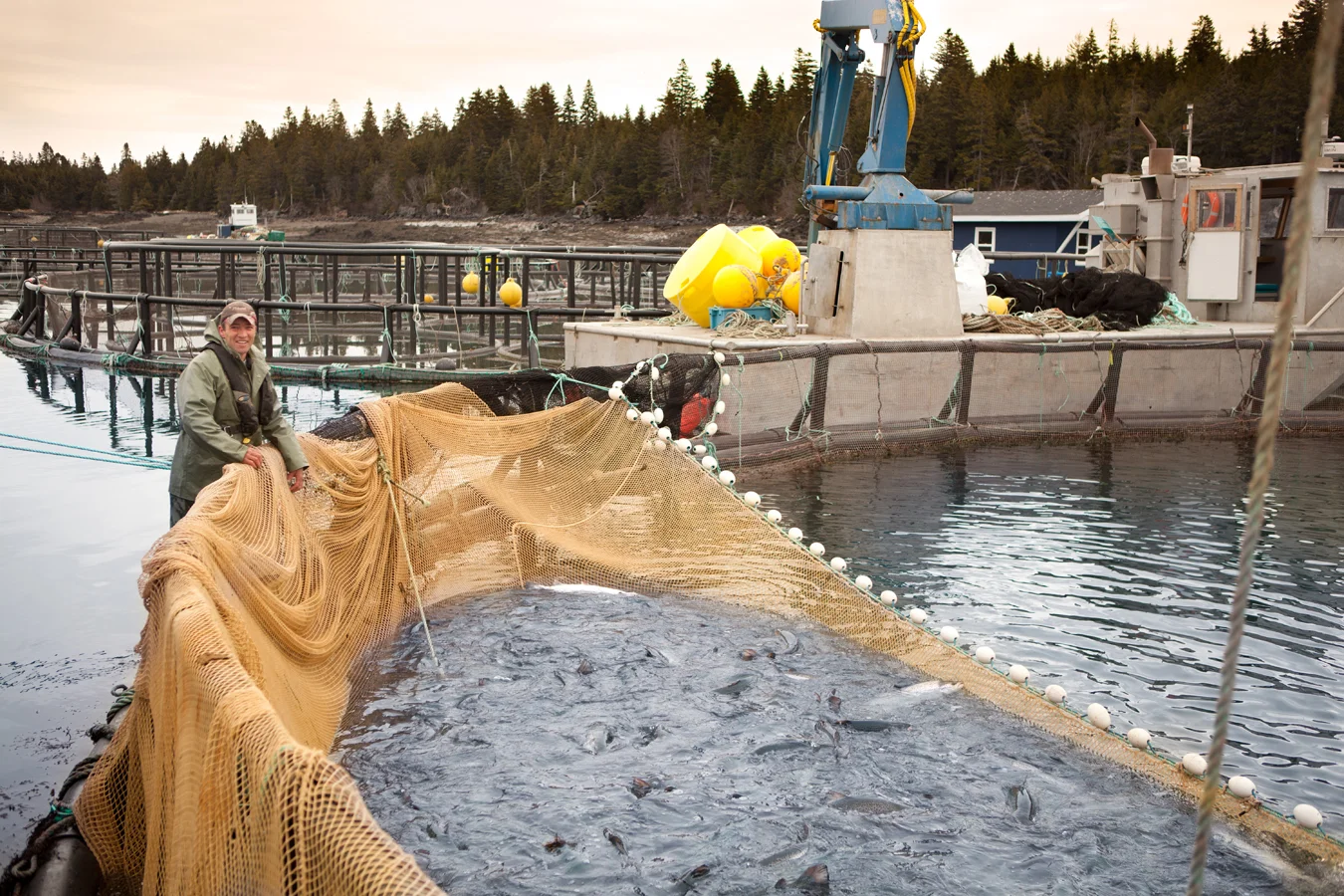Welcome To Canadian Aquaculture Industry Alliance
The Canadian Aquaculture Industry Alliance (CAIA) is a national forum that is dedicated to advocating and advancing the farm-raised seafood sector in Canada.
CAIA is a passionate advocate for a competitive, sustainable, diverse and growing farmed-raised seafood sector that contributes economic, environmental and public health benefits to Canada.
What is Aquaculture
Aquaculture is the farming of aquatic organisms, e.g. fish, molluscs, crustaceans and aquatic plants. Farming implies some sort of intervention in the rearing process to enhance production, e.g. regular stocking, feeding, protection from predators, etc. Farming also implies individual or corporate ownership of the stock being cultivated.
Aquaculture Species
Approximately 100 different species are currently farmed in aquaculture operations around the world. Canadian aquaculturists farm various species of finfish, shellfish, and aquatic plants.
Aquaculture in Canada
Aquaculture occurs in every Canadian province, including the Yukon and we farm more than a dozen types of fish and shellfish.
Careers in Aquaculture
There are many types of careers and occupations in the aquaculture sector from the farm to the suppliers, to academia and even government.
Farmers Feed the World
Aquaculture is among the fastest growing food sectors in the world - accounting for nearly 50% of the world’s total fish production.
+ The World Needs More Fish

The global demand for seafood is steadily increasing. Population growth, rising per capita incomes, and urbanization are fueling a 7 - 9% increase in demand each year.
Currently, traditional capture fisheries can only supply half the global seafood demand. The other half of the global seafood supply already comes from aquaculture. And - since many fishing stocks are facing intense depletion – the world’s growing demand for seafood can only be met by increasing aquaculture production.
According to Food and Agriculture Organization of the United Nations, aquaculture will need to supply 2/3 of the world’s seafood requirements by 2030. Without aquaculture, the world will face a seafood shortage of 50-80 million tonnes by 2030.

According to the UN FAO, aquaculture will increase to two-thirds of global food fish consumption by 2030.
+ Canada’s Opportunity
Few countries can match Canada’s natural advantages when it comes to aquaculture—an enormous coastal geography, an abundance of cold, clean water, a favourable climate, a rich marine and fishery tradition, and established trade routes to the United States, Asia, and Europe.
However, Canada has yet to fully capitalize on its opportunity to become a global aquaculture leader. Canada’s aquaculture production has shown little growth since 2000. Through a comprehensive analysis of Canadian aquaculture, CAIA determined that the principal factor constraining the growth of the aquaculture sector was Canada’s complicated and inefficient aquaculture regulatory system.
+ A Strategy for Growth in Canada
To overcome this obstacle, CAIA launched “Responsible Aquaculture Development in Canada: A National Strategy for New Jobs, Science-based Management and a Health Food Supply” in 2012. This National Strategy encompasses a truly national vision, a modernized legislative and policy framework, and regulatory clarity.
Since 2012, CAIA has been working tirelessly with all governments to implement the National Strategy in a way that unlocks the full range of economic, environmental, and public health benefits that flow from a competitive, sustainable and growing farmed seafood sector.
Potential for Growth
With the proposed legislative, regulatory and policy reforms, by 2024 Canadian aquaculture could:
- increase production to over 378,000 tonnes per year
- generate more than $6.35 billion in economic activity per year
- increase GDP to $2.5 billion per year
- employ more than 32,500 Canadians
Environmental Footprint
The increased productivity enabled by these reforms would allow Canadian aquaculture to:
- increase output by 120%, but increase water acreage by only 38%
- occupy only 1.35% of the total area biophysically suitable for aquaculture in Canada – a much, much smaller footprint than in other countries
Benefits to Canadians
A sustainably managed aquaculture industry revitalizes coastal and rural communities while supplying nutritious seafood year-round.
Aquaculture in Canada today:
- Generates $3.1 billion in economic activity
- Employs over 15,100 Canadians
- Occurs in every province and the Yukon
- Provides 1/3 of the total value of Canada’s fisheries production
+ A Truly National Industry
Aquaculture contributes to the economies of all Canadian provinces – as well as in the Yukon. Across the country, aquaculture generates $3.1 billion in economic activity and creates over 15,200 jobs for Canadians throughout the food production value chain. Two-thirds of all workers are under the age of 35. Canada sustainably farms approximately 172,000 tonnes of seafood a year.
The largest aquaculture producing provinces are:

+ Vibrant Coastal and Rural Economies
Aquaculture contributes to the economies of all Canadian provinces – as well as in the Yukon. Across the country, aquaculture generates about $2 billion in economic activity and creates over 14,500 jobs for Canadians throughout the food production value chain. Two-thirds of all workers are under the age of 35. Canada sustainably farms approximately 174,000 tonnes of seafood a year.
+ Healthy Food Supply
The health and nutritional benefits of a diet that makes frequent use of fish and seafood are exceptionally well documented. The evidence across different studies showed that fish consumption lowers the risk of death from heart disease by 36% (Harvard School of Public Health). The Health Canada Food Guide recommends that Canadians consume at least two servings of fish each week as a rich source of Omega-3 fatty acids, helping to combat heart disease and generating a host of additional health benefits.
According to a recent joint FAO-World Health Organization report:
- Consumption of fish provides energy, protein, and a range of other important nutrients, including the long-chain n-3 polyunsaturated fatty acids (LC n-3 PUFA).
- Consumption of fish, particularly oily fish, lowers the risk of coronary heart disease (CHD) mortality.
- Maternal fish consumption lowers the risk of suboptimal neurodevelopment in their offspring compared to women not eating fish.
- Healthy dietary patterns that include fish, and are established early in life, influence dietary habits and health during adult life.
Overall, increased seafood consumption can help to reduce health care costs for Canada in the long run. Expanded farmed seafood production in Canada can play a vital role in capturing these benefits for Canadians.















